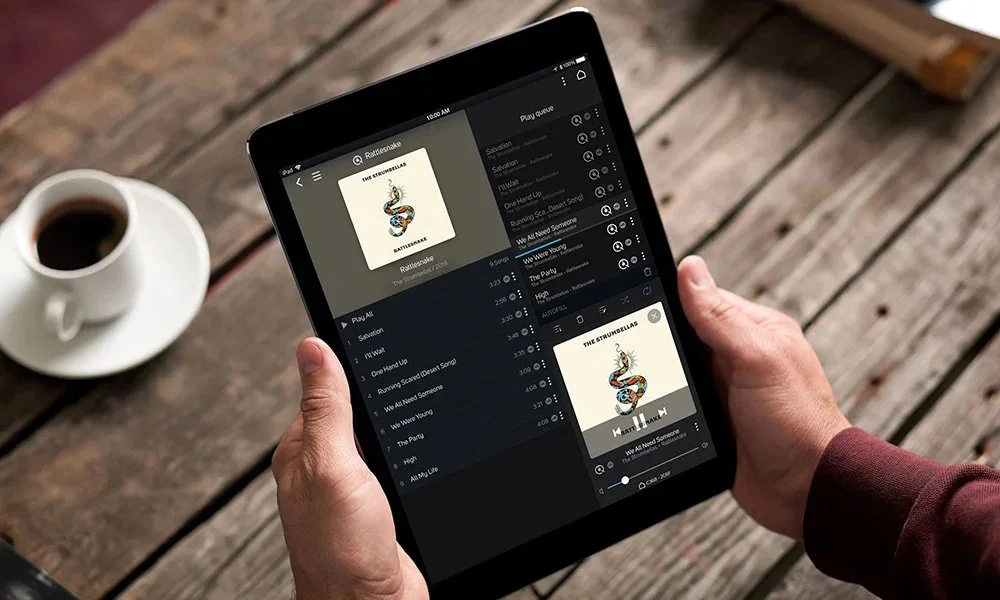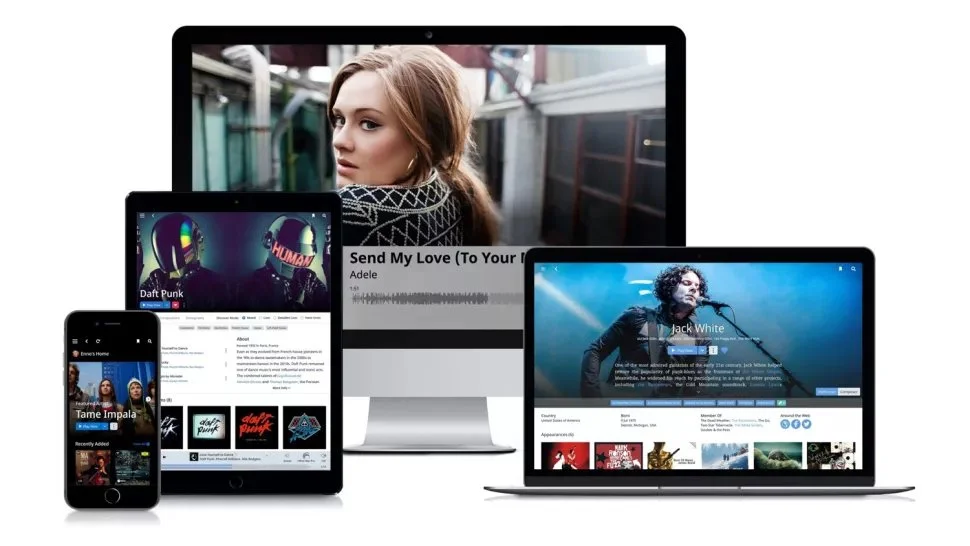Audio streaming - What’s it all about?
/Where do we start? Well, audio streaming is commonly misunderstood, as the terminology is misused and incorrect assumptions are made, leading to confusion and propagation of misinformation. We’re here to break it down and make it simpler to understand by outlining:
What is audio streaming?
What are the types of audio streaming?
Systems applications
Streaming services
Types of Music files
System elements of a streamer
What do I need
What is audio streaming
So, without further ado, let’s get started…
What is audio streaming?
Audio streaming is the ability to digitally transfer audio data between the place it is stored to a place where it can be heard. A common example of this would be playing music files from a smartphone to a wireless speaker. But how does it work? What method is used to transfer this data?…
What are the types of Audio streaming?
Bluetooth - Bluetooth is a short range wireless technology that is commonly used in phones and headphones. There are many variants of the protocol and you will need the transmitter and receiver to be capable of the latest protocol to get the highest quality. Bluetooth in general is a lossy protocol, which means the quality is less than CD and subject to higher degrees of compression. Not to mention it is occasionally prone to dropouts and interference.
AirPlay - AirPlay is a proprietary wireless communication protocol developed by Apple that allows streaming of audio & video between devices over a Local Area Network abbreviated to LAN (Wifi and Ethernet). Originally implemented only in Apple's software and devices, it was called AirTunes and used for audio only.
Apple AirPlay icons found on apps that support the protocol
Although a convenient and easy protocol, it has limitations on the quality of the audio it uses. AirPlay 2 is able to support a multiroom and there are many devices that support AirPlay such as Sonos, Naim and Bluesound.
Chromecast - This was developed by Google as an answer to Apple’s AirPlay and works over a LAN. The latest version supports audio files of 24bit 96kHz.
Google Cast is a proprietary protocol developed by Google for playing Internet-streamed audio/video content on a compatible consumer device
Some systems have Chromecast support built-in, such as Cyrus ONE Cast and Arcam ST60 to name but a few.
Cyrus one cast streaming amplifier
uPnP Streaming - Universal Plug and Play (UPnP) allows for files to be passed between a storage device and a compatible player. Smartphone apps such as Bubble allow for the control of media being played.
Spotify Connect and Tidal Connect allow you to stream your music to any Connect-enabled device over WiFi and directly from the streaming services servers to your audio device.
System applications
To enable control over your selection of music sources such as streaming services or playback devices, manufacturers utilise interactive applications that run on smartphones, tablets and computers.
Common System platforms:
HEOS - HEOS is a wireless multi-room sound system from Denon & Marantz that allows users to play their favorite music using a home Wifi network. The audio platform is available through receivers, select wireless speakers, and soundbars from the two brands.
Bluesound BluOS - Although originally designed specifically for use with Bluesound products, BluOS has become integrated with many hi-res wireless music systems from the likes of Roksan, Cyrus, DALI and Monitor Audio. This provides a unique opportunity to connect multiple BluOS-enabled systems from different manufacturers together to enjoy your music in perfect sync in every room of your home.
Bluesound bluos app
Roon Labs - Roon brings all your music together, so you don't have to worry about where it's stored, what format it's in, or where you stream it from. Roon supports music files stored on internal and external hard drives and NAS, your iTunes library, live radio stations, and streamed content from the likes of TIDAL and Qobuz.
Steaming services
There are numerous internet streaming services that have different catalogues, types of music file (quality) and subscription plans. Some of the most popular are -
Spotify (Try Premium for 90 days Free Here)
Apple Music
Amazon Music (Try for 90 days Free Here)
Tidal (Try for 30 days Free Here)
Qobuz (Try for 90 days Free Here)
Deezer (Try for 30 days Free Here)
TuneIn (used for internet radio on a multitude of systems)
Types of Music file
When storing files there a lots of different formats. Lossless audio is assumed to be the same quality as CD.
Uncompressed audio formats e.g: WAV and AIFF
Formats with lossless compression e.g: FLAC, ALAC, WMA LOSSLESS
Formats with lossy compression e.g: MP3, AAC, WMA
Hi-Res Music - High-Resolution Audio is audio that uses a higher sampling rate than in CDs. Higher sampling rates mean that more samples per second were taken when the original analog sound was converted into digital which in turn gives a more accurate reproduction of the analogue signal.
System elements for streaming
Storage - Audio files can be stored in a number of ways. These include:
NAS (Network Attached Storage)
Storage Server - Such as the following…
External USB Hard Drive
SD Memory card
“Ripping” is a term for taking the content of a CD and storing it on a digital storage device. This allows for people to store their entire CD collection on a small device. There are many devices that allow for combined ripping and storage solution such as the Naim Uniti Star, Bluesound Vault 2i, Innuos Zen range and products from Melco.
Streaming Transport - A streaming transport allows for locally stored files and internet streaming services to be used. The transport only deals with digital audio and does not have any analogue output.
DAC - A DAC (Digital Analogue Converter) converts a digital signal to analogue audio. These can be built in to components or bought as dedicated units that come in all shapes and sizes, from the small and portable EarMen Sparrow Pocket DAC all the way up to the AURALiC Vega G2.1 Streaming DAC and even further beyond. You can see a full range of DACs on our website here.
External Clock - An external clock usually connects to your equipment using word clock connections, typically using BNC cables, and provides a more stable and accurate clock to improve the sound of DACs. There are exceptions to this, like the award winning Innuos PhoenixUSB Clocker, which as its name suggests connects via USB.
Upscaler - Upscaling (or upsampling) is a process which increases the resolution and quality of a digital file. Examples of these products are the Chord Electronics M Scaler and the AURALiC Sirius.
What do I need?
The answer to this question needs an understanding of what is required. This could be from wirelessly playing music from your phone to a speaker, or the best way to reproduce digital music from your audio streaming provider.
At Audio T we can guide you through the process so you find a solution that meets your needs and gets the most of your system. There is no such thing as a stupid question so ask away and we will be happy to take you through the world of digital audio.
Thanks for reading,
Nick, John and Wayne - Audio T Southampton.
If you have any questions about any of the equipment featured in this article, or any other Hi-Fi or home cinema enquiries, be sure to Contact Us.
You can find out more about Lyngdorf and their history by reading a full article in Music at Home+ Spring 2023.
If you’ve enjoyed this, why not go ahead and read some more of our other blogs, and be sure to follow us on our social media channels below…













